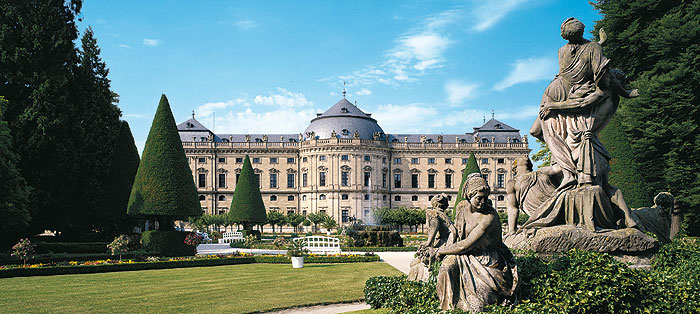
Armenian letters in the European distinguished fresco
The former residence of the Würzburg prince-bishops is one of the most important baroque palaces in Europe. It was begun for Prince-Bishop Johann Philipp Franz von Schönborn by the then young and unknown architect Balthasar Neumann (1687-1753); the shell of the palace was built from 1720 to 1744 and the interior was completed in 1780.
The interior of the Würzburg Residence was the finest of its age. At the Würzburg court three generations of artists and artisans from all over Europe produced an independent variation of the rococo style. The highlights – and almost the final part – of the interior decoration were created by the Venetian Giovanni Battista Tiepolo (1696-1770) with his ceiling frescos in the Imperial Hall and above the staircase, completed from 1751 to 1753.
A huge fresco, that decorates the hallway of the Wurzburg Palace with the figures and images of various mythological creatures, ancient gods, nymphs, the allegories of inhabitants of the continents, and exotic lands, including the depiction of the plaque with the Armenian letters.
According to one of the existing theories, the rendering of the Armenian letters might have been influenced by Tiepolo’s links with the Armenian priests at the monastery of the Mekhitarist order of the Armenian Catholic Church, an Armenian Catholic congregation on Saint Lazarus Island, Venice.










